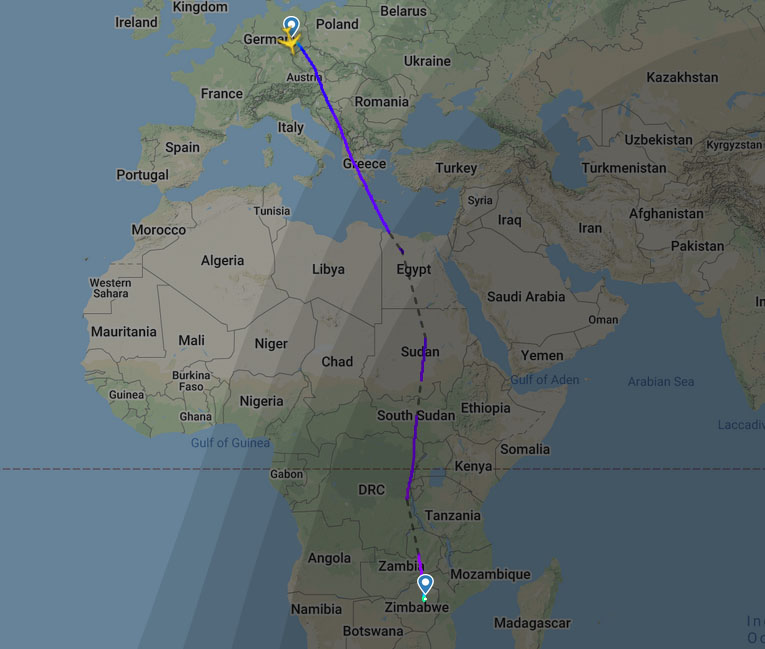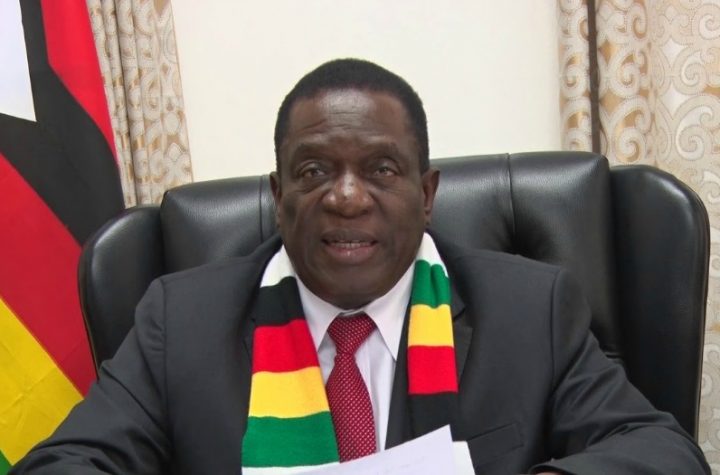
Zimbabwe has received on Thursday (today) 60,000kg (60 tonnes) in freshly-printed higher denomination bond notes, which the central bank says will go into circulation at the end of this month.
The central bank (RBZ) announced last week that Z$10 and Z$20 bond notes were being printed to complement the Z$2 and $5 notes which have become valueless as the inflation-hit currency rapidly.
263Bulletin established that the new notes were delivered to Robert Gabriel Mugabe International Airport on Thursday (today) morning by a Boeing 747-48EF(SCD) cargo plane which flew out of Leipzig in Germany.
The aircraft, registration TF-AMU, is owned by Air Atlanta Icelandic of Iceland.
A reliable source told 263bulletin that the plane delivered 60,000kg of bank notes.
The RBZ has previously refused to disclose where the bond notes are printed, while bond coins are known to be minted in South Africa.
Basing on where the plane originated, it is highly likely the bank notes were printed by the Leipzig division of Giesecke & Devrient, a Munich-headquartered company which has a history of doing business with Rhodesia and its successor state Zimbabwe going back to 1965.
Giesecke & Devrient stopped printing Zimbabwean banknotes in 2008 after an “official request” from the German government. The company said in a statement at the time that its decision was “a reaction to the political tension in Zimbabwe, which is mounting significantly rather than easing as expected, and takes account of the critical evaluation by the international community, German government and general public.”
It appears the company has re-opened its Zimbabwe account.
263Bulletin reported last week that the Reserve Bank of Zimbabwe has approved the introduction of ZWL$10 and ZWL$20 banknotes worth close to Z$600 million “to increase physical money supply and curb cash shortages.”
Currently, the RBZ says ZWL$1.4 billion in cash is circulating, and the higher denominated notes will increase this to about ZWL$2 billion
Zimbabwe has ZWL$2 and ZWL$5 notes, and ZWL$1 and ZWL$2 coins, in circulation which make cash transactions cumbersome, with small transactions now requiring the carrying of huge wads of notes due to inflation which jumped to 676.39 percent year-on-year in March.
Cash shortages have triggered long queues at banks and a thriving illegal forex market where premiums of up to 40 percent are charged to convert money held in the bank into cash.
In addition, cash shortages have led to the creation of a multi-tier pricing system, where prices of a single product differ depending on the customer’s mode of payment.
Eddie Cross, a member of the RBZ’s Monetary Policy Committee, said banks will be required to exchange their electronic balances for physical cash to ensure that no new money is created.
“We’re moving cautiously because we don’t want to disturb the monetary balance and we’re insisting that banks pay for the currency when they draw it so that there’s no money creation,” Cross said.
“We’re now taking steps to start implementing that. We started in September last year when we had about ZWL$500 million worth of notes in circulation and now we have between ZWL$1.3 billion and ZWL$1.4 billion notes. This will take it up to ZWL$2 billion. Our target is ZWL$3 billion, which amounts to about 10 percent of our money supply,” said Cross
Zimbabwe is grappling with its worst economic crisis in a decade, marked by shortages of foreign exchange, medicines and cash as frustration over President Emmerson Mnangagwa’s government grows.
Zimbabwe reintroduced its currency, the Zimbabwe dollar, last June, ending a decade of dollarisation. But with no foreign or gold reserves to back it up, its value has plunged while inflation has soared as Zimbabweans fear a return to the 2008 hyperinflation period which forced the country to abandon the Zimbabwe dollar.
Finance minister Mthuli Ncube, in the letter to the International Monetary Fund dated April 2, warned that the country is headed for a health and economic “catastrophe” from the coronavirus pandemic because its debt arrears mean it cannot access foreign lenders.
Lenders like the International Monetary Fund and World Bank stopped lending to Zimbabwe in 1999 after the country defaulted on its debt repayments.
That has led the government to resort to domestic borrowing and money-printing to finance the budget deficit, pushing inflation to the second highest in the world.



More Stories
ZUPCO gazettes new fares
TIMBER AND BOARDS CENTRE; CUSTOMER BLITZ
The sale of alcohol is still permitted;restricted to bars,restaurants,pubs and night clubs